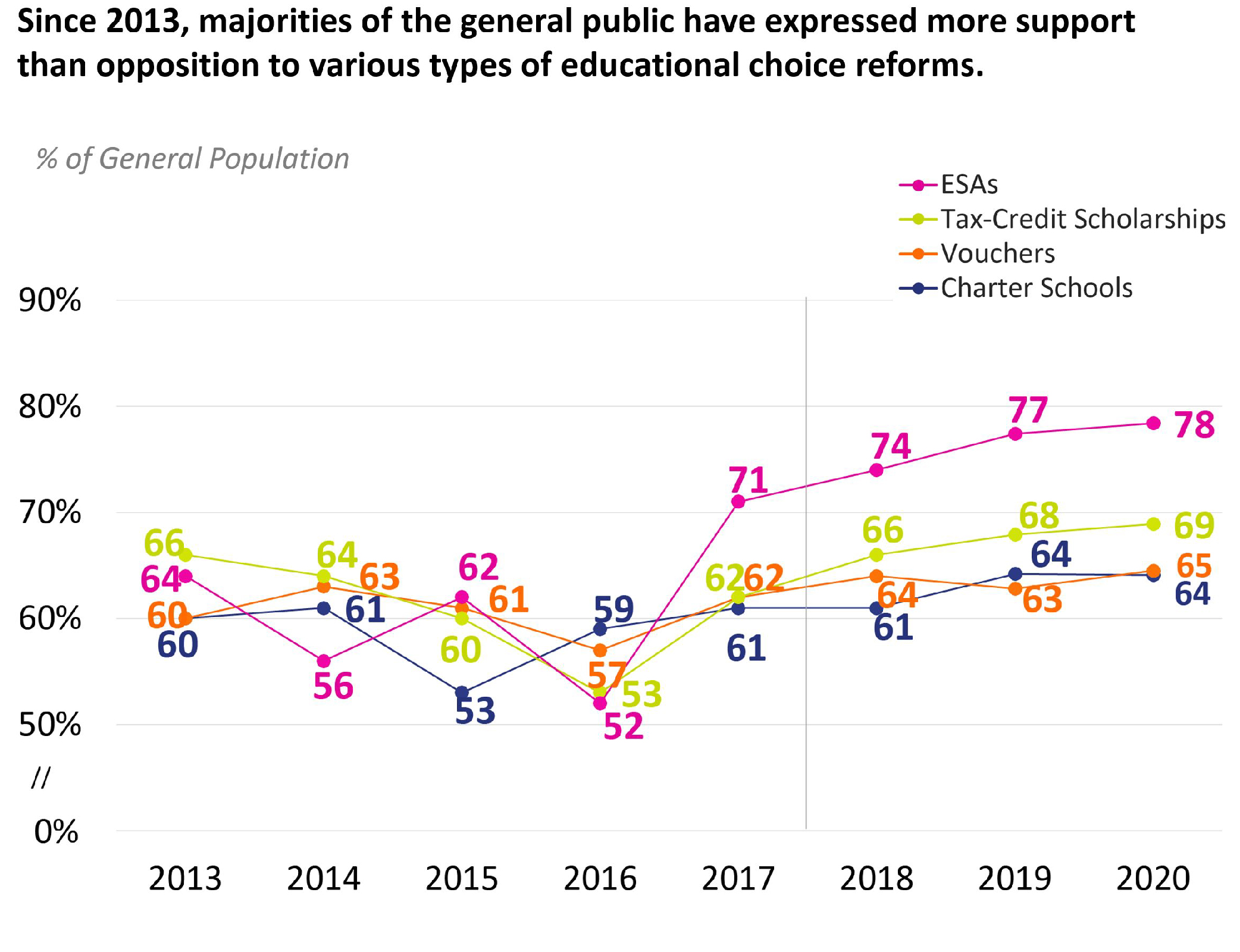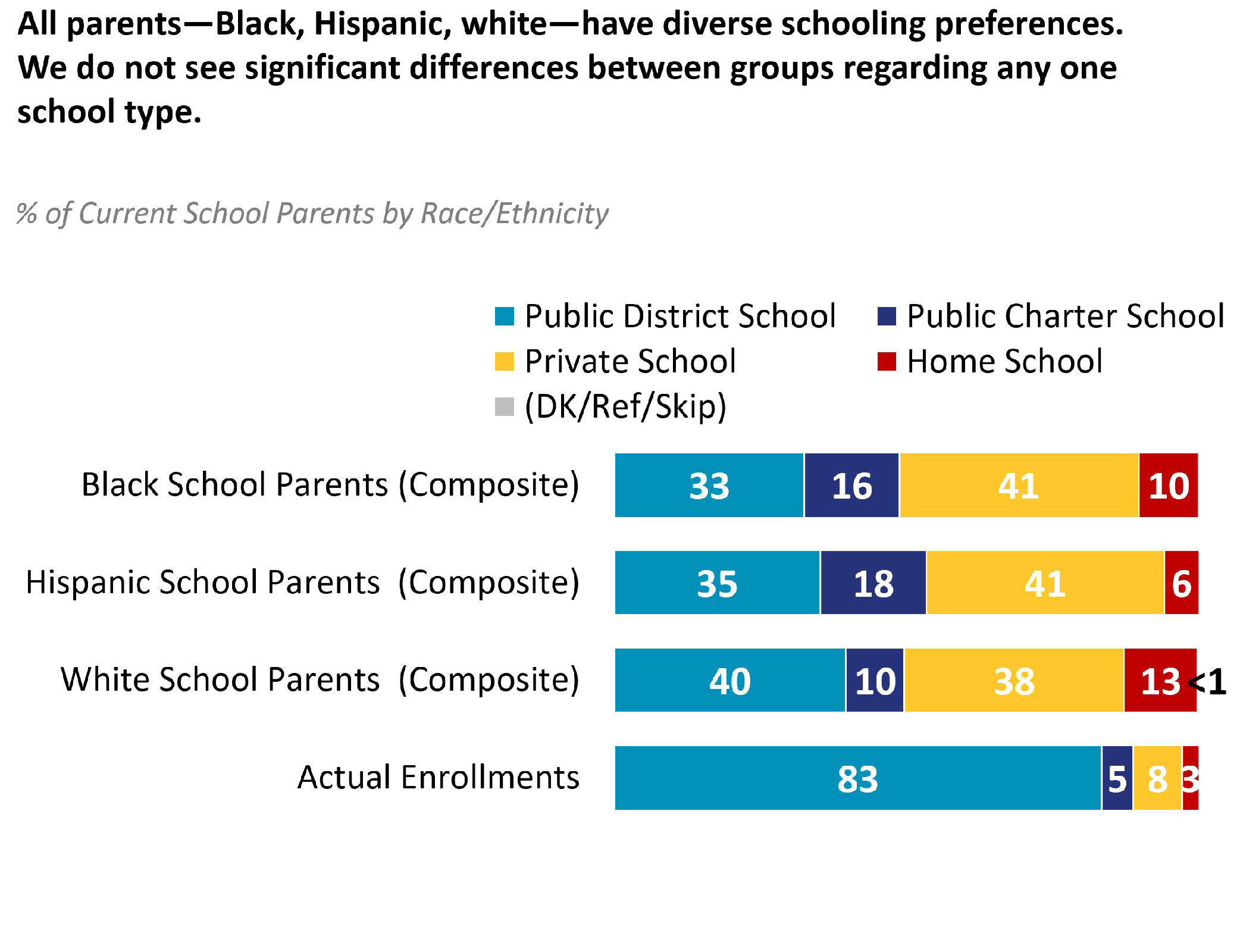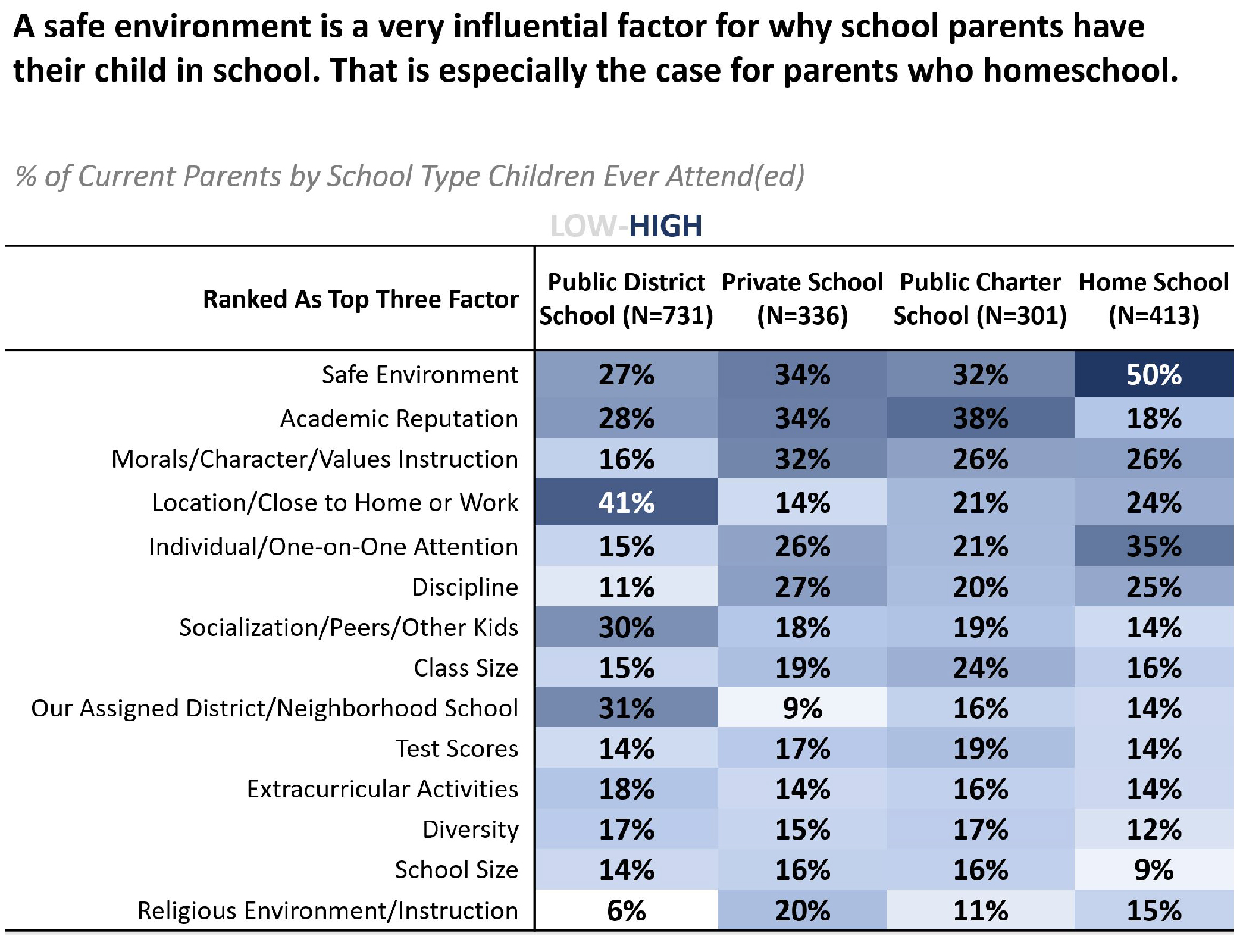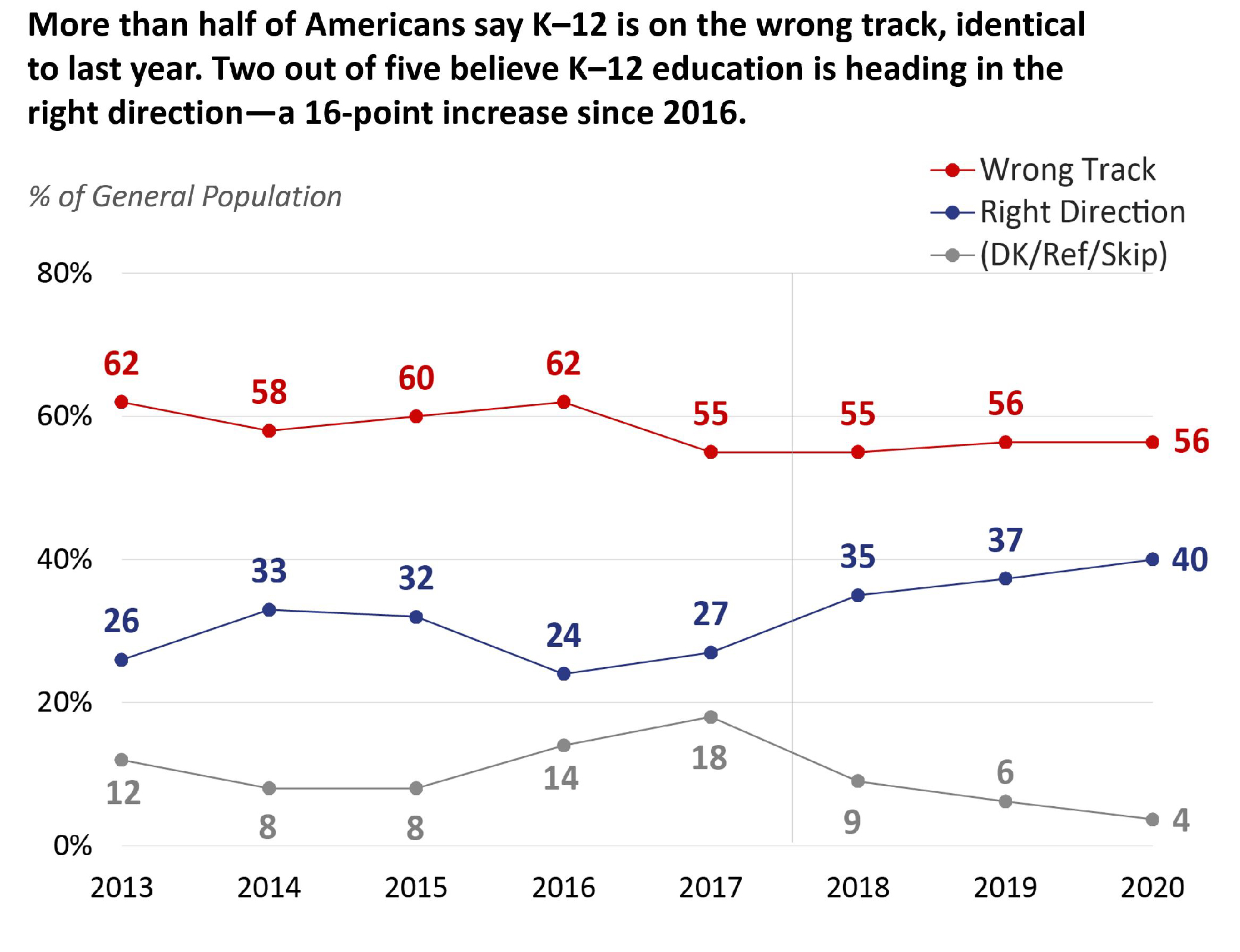2020 Schooling in America Series: School Choice, Education Spending and More
In preparation for the first full semester of the COVID-19 pandemic, schools of choice stood at policy and parental crossroads. Charter and private schools of various sizes received pandemic-related funding to stay afloat, causing many to reassess the relationship between K–12 and government funding. New private school parents from South Carolina to Arizona are propping up the non-public schooling sector in search of in-person instruction for their children, while other states and counties are limiting all schooling sectors from operating in-person.
The third of three reports from the first wave of our 2020 Schooling in America Survey—K–12 and School Choice Reforms—sheds light on some notable trends among parents of different races as well as the general public. We surveyed 1,605 adults, parents among this sample, in late May and early June about school choice and education issues affecting their families and communities. Here is what we found:
1. Though change seems to be the constant in K–12 education, public support for various types of school choice remains strong.
Majorities of Americans favored educations savings accounts (ESAs) (78%), tax-credit scholarships (69%), vouchers (65%) and charter schools (64%) when provided a simple description of each. ESA support is at an all-time high in our survey project’s eight-year history.

Parents are slightly more favorable toward ESAs than the general public, with a parent’s racial or ethnic background not factoring into ESA favorability. Favorability changed, though, when considering whether the ESA was available to all families or based on financial need. All parents favored universal ESAs, but Hispanic parents (70%) were more likely to favor means-tested ESAs than Black (58%) and white (56%) parents. Comparatively, the 2020 EdNext Poll found African Americans were more likely to favor means-tested vouchers than universal vouchers, compared to Hispanics who slightly favored universal vouchers.
2. All parents, regardless of race, expressed diverse preferences when it came to the school type they’d prefer for their children, and those preferences don’t match up to actual enrollment data.

Though schooling sector preferences weren’t significantly different across racial lines, parental satisfaction with schooling types did differ by race in a few scenarios. First, Black families (82%) were much more satisfied with their homeschooling experiences than Hispanics (56%), although it should be noted that small sample sizes mean this finding should be interpreted cautiously. Second, parents of different races/ethnicities were all “most satisfied” with different schooling sectors: Black parents with homeschooling, Hispanic parents with charter schools and white parents with private schools.
3. School choice families prioritized safety, and public school parents prioritized proximity when choosing their children’s schools.
Some parents chose full-time virtual schooling for their children before the pandemic, with various states offering statewide public, charter and even private virtual education options. Though these types of virtual schools have shown lackluster achievement and attainment results in some studies, nearly a fifth of elementary and middle-school principals saw exclusive remote learning as the best and safest schooling model for the fall semester.
Our survey found a safe environment was one of the top three reasons parents of homeschoolers (50%), charter schoolers (32%), and those in private schools (34%) chose their schools. Parents’ top reasons for choosing their public district school, on the other hand, had more to do with proximity. Forty-one percent factored district zoning assignment as a primary reason for choosing, and 31 percent chose because the school was close to home or work.

4. Despite all the pandemic-related turmoil in America’s schools, the number of Americans who believe K–12 education is headed in the right direction has increased
While a majority (56%) of Americans say our elementary and secondary education system is headed on the wrong track, the 40% who view things the other way represents an increasing trend of positivity. This year’s proportion of respondents who believe K–12 education is on the right track is at the highest level in eight years of polling.

The coming months may significantly alter what qualifies as the right direction for education in America, though, especially for the parents and students who are looking to private schools, learning pods and other educational alternatives as a means of normalcy. Looking forward to the winter, we’ll be releasing a second wave of our 2020 Schooling in America survey to see how if at all Americans’ and parents’ views on educational choice, school reopening and other K–12 issues evolved during one of the most challenging semesters in recent memory.




